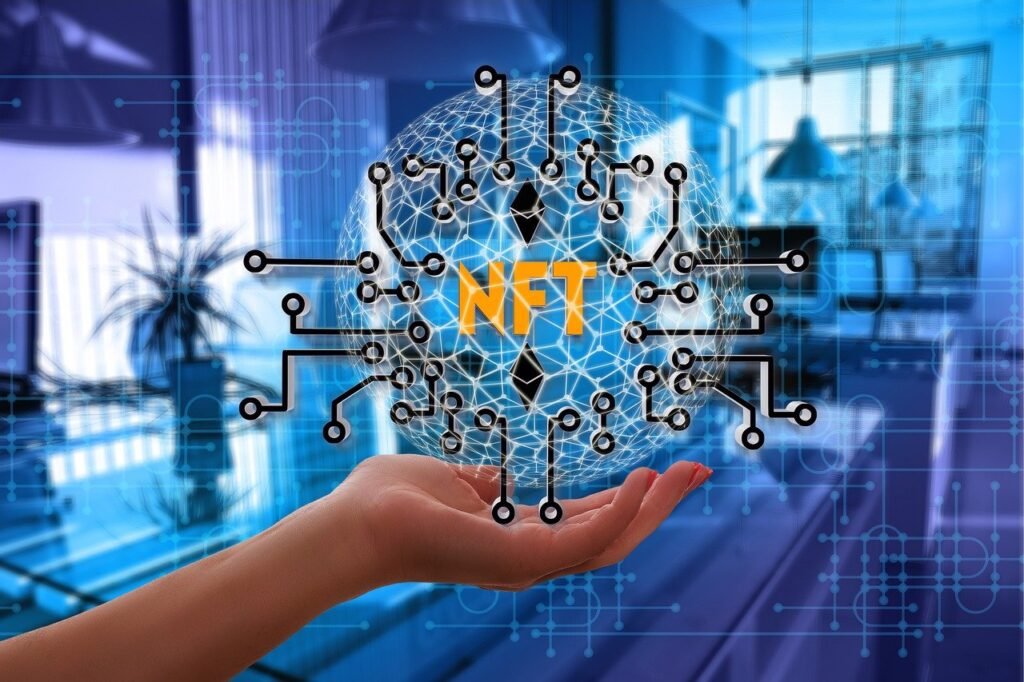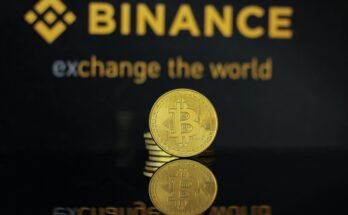Introduction
Blockchain technology is one of the great revolutions of the 21st century. It powers cryptocurrencies such as Bitcoin and Ethereum but goes well beyond digital currencies. Blockchain is dominating many industries in the world today from supply chain management to making secure transactions. If you’re just beginning your journey into blockchain and looking for an introductory guide that is easy to read, look no further.
In this post, we’ll discuss what blockchain means in plain language, how it works, its advantages, and other real-life scenarios. By the end of the article, you would be well-equipped with an understanding of what blockchain is all about and the reasons behind its buzzing fame.
What is Blockchain?

Simply put, blockchain is a decentralized digital ledger for logging transactions across several computers. In contrast to traditional databases maintained by a single entity, blockchain is said to be distributed, which means that it is not under the management of either a single organization or an individual.
The basic record in a blockchain is a block. Blocks are aligned next to each other in chronological order; these permutations form a chain that structurally connects each other, hence the name Blockchain.
People often think that blockchain refers only to Bitcoin, the first cryptocurrency. In its simplest sense, it is much more than that. Its utility varies, depending on application: for example, management of digital identities, verification of transactions, and securing data in assorted fields.
How Does Blockchain Work?
Blockchain is easier to understand if dissected into its constituent parts:
- 1.Consensus: Blockchain works without a single governing authority. It instead relies on a peer-to-peer network, where every participant on the network can view the entire blockchain.
- 2.Immutability: Once a transaction is recorded on the blockchain, it is near impossible to change or delete it. Hence, blockchain guarantees security and trust.
- 3.Transparency: Each of the transactions is visible for everybody in the network, which offers trust among users.
- 4.Consensus mechanisms: There is a consensus mechanism- a process through we define the checks for validating transactions which can be PoW or PoS, allowing only transactions that pass verification for insertion in a blockchain.
- 5.Cryptographic security: Each block is protected by using cryptography techniques that make it almost impossible for hackers to gain access to change transaction data.
Advantages of Blockchain Technology
Among the many advantages blockchain has over conventional systems are:
- *Security: Its decentralized nature makes it highly secure and resistant to hacking.
- *Transparency: Transactions are verifiable in public to reduce fraud.
- *Costly: Eliminates the middleman and saves companies some really good money.
- *Efficient: Better transactions than traditional banking.
- *No possible fraud: Since blockchain transactions can never be manipulated, it very restricts fraud and corruption.
- *Trust and Verification: A public ledger enables people to verify transactions without using a third party.
Real-Life Applications of Blockchain
Blockchain isn’t just for cryptocurrency; its use cases extend across various industries:
1.Currencies and Cryptocurrency Transactions: Bitcoin and Ethereum are built on blockchain technology: secure digital payment.

- Supply Chain Management: Companies, like Walmart, use blockchain to track food sources to prevent contamination.
- Smart Contracts: Ethereum’s blockchain allows self-executing contracts that automate business processes.
- Securely and Safely Keeping Patient Records Healthcare-Ensured Patient Privacy and Accessibility.
5.Voting Systems: Blockchain-based voting can reduce election fraud and increase transparency in elections.
6.Real estate: The transfer and sales of property through blockchain can ease the process of transactions while eliminating fraud. - 7.Protection of Intellectual Property: Thanks to the blockchain, artists, musicians, and content creators can protect their work against plagiarism or unauthorized use.
8.Finance and Banking:Syndicated banks and financial institutions are also exploring distributed ledger technology for Cross-border payments and fraud prevention.
9.DApps are decentralized applications running in a peer-to-peer manner. The blockchain enables the formation of applications which are greatly secured and prioritized user privacy.
Challenges of Blockchain Technology
Against the hype, several justifications open-eyed reality call concerned attention to obstacles hampering the high-sounding promise and advantages of using blockchain technology. Some include:
- Scalability Challenges: For public chains like Bitcoin, transaction speeds can diminish, hitting rock bottom as increasing numbers of users join their networks.
- Power Consumption: In many cases, the power consumed to finish proof-of-work tasks across blockchains becomes a stunner.
- Ambiguous Regulation: Governments are still trying to fully understand how to regulate blockchain technology and cryptocurrencies.
- Integration Trouble: Conventional enterprises lack faith in the prospect of integration of blockchain with their existing systems.
- Initial Investment: While Blockchain may save budgetary allocations in the long haul, huge investments in technology, infrastructure, and people invested in the technology are needed before any upside.
What Does the Future Hold?
The future of blockchain is pretty bright, with successive advancements and new use-to-case scenarios developed or proliferated each day. Common futures include:


- AI on the Blockchain: The dual use of artificial intelligence and blockchain provides data security and trust in AI-driven processes.
- Decentralized Finance (DeFi): DeFi applications are replacing the traditional finance systems with blockchain solutions attempting to dethrone them.
- Non-fungible Tokens (NFTs): An NFT is a unique digital asset recorded on a blockchain; it has transformed domains of art and gaming.
- Governmental Adoption: Some governments are testing blockchain use in secure voting, digital identity verification, and transparent record-keeping.
- Interoperability: Developers are searching solutions to enable different blockchains to communicate with one another and exchange data.
- Green Blockchain: More environment-driven mechanisms such as the proof-of-stake protocol are formulated to ease environmental backlash.


In conclusion
Blockchain is not just another buzzword; it is a cutting-edge technology that has the potential to change a wide range of industries. Whether you are an investor, a tech enthusiast, or just curious about the future of digital transactions, understanding blockchain makes way for exciting opportunities.
The more this technology progresses, the broader will be its applications, securing our digital world, making it more transparent and resource-efficient. If you enjoyed reading this guide, take a moment to share it with someone else who would benefit from knowing about the technology called “blockchain”.
If you want to know more about blockchain, see some online courses, books, and even news about industries so that you can stay current with this rapidly-growing technology.


